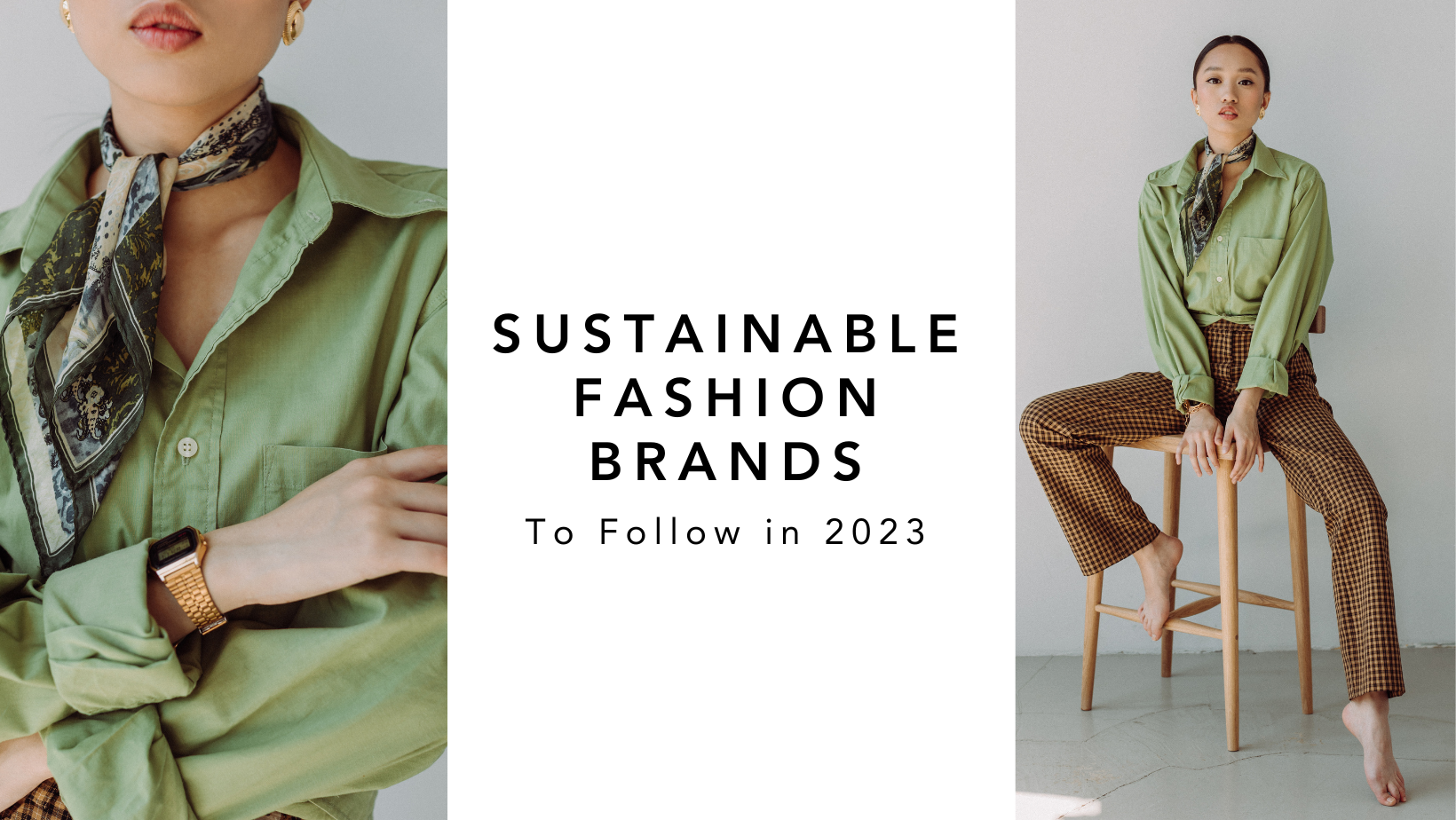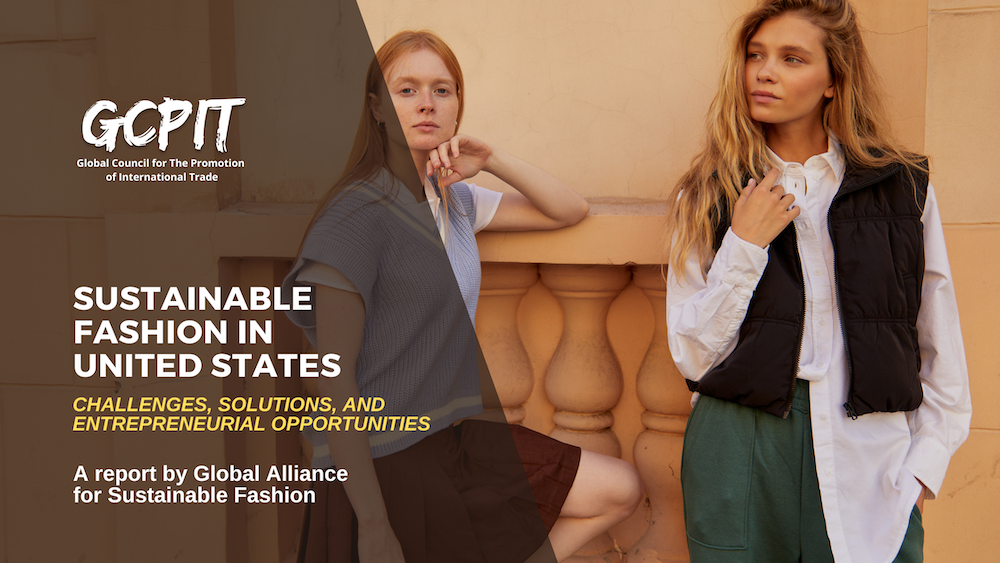Cape Town Sustainable Fashion: Redefining Style with Moral Options
Cape Town Sustainable Fashion: Redefining Style with Moral Options
Blog Article
Remain Ahead of the Curve by Exploring Ingenious Style Fads
In a sector as dynamic as style, remaining ahead includes greater than just adhering to existing trends-- it requires an exploration of innovation. Smart fabrics, for example, are transforming garments into functional work of arts, while 3D printing is reinventing style processes with its customizable, waste-reducing capacities. As sustainability becomes a foundation, developments like green products and circular style techniques are reshaping ecological responsibility - Cape Town Sustainable Fashion. In addition, the convergence of innovation and fashion declares a new age of consumer engagement. Exactly how, then, can these emerging trends redefine the future of style, and what implications do they hold for brands seeking to flourish in this evolving landscape?

Embracing Smart Textiles
In the last few years, the fashion business has actually observed a transformative change with the combination of clever textiles, a sophisticated innovation that mixes modern technology with textile. This evolution represents not only a combination of visual appeals and capability but additionally a substantial jump in the direction of sustainability and customization in vogue. Smart fabrics, likewise referred to as e-textiles, embed advanced electronic devices such as sensing units and conductive strings within the textile, allowing garments to connect with the environment or the wearer.
These textiles are created to monitor physiological criteria, such as heart price or body temperature level, giving real-time wellness analytics. Past wellness applications, clever fabrics are also being used for flexible garments, which can change shade or pattern in action to environmental stimulations, hence using a vibrant fashion experience.
Furthermore, the development of energy-harvesting fabrics that create power from motion or sunlight is leading the way for self-dependent wearable innovation. This innovation is appealing to eco aware consumers and developers aiming to lower the environmental footprint of fashion. As r & d in this area advance, clever textiles are expected to end up being progressively prevalent, improving the landscape of modern-day fashion with their multifunctional capabilities.
The Increase of 3D Printing
Revolutionizing the production landscape, 3D printing has emerged as a game-changer in the apparel industry. This innovative technology has actually made it possible for designers to push the boundaries of creativity, producing detailed and personalized garments that were previously unimaginable. By leveraging digital design and additive manufacturing, 3D printing helps with the production of complex geometries and patterns, enabling developers to try out brand-new textures and structures.
A noteworthy benefit of 3D printing in vogue is its capacity to produce on-demand, decreasing waste and lowering inventory needs. This performance not just maximizes manufacturing procedures but additionally enables fast prototyping, allowing developers to bring their visions to life in a much shorter duration. Moreover, 3D printing supports personalization somewhat unrivaled by typical methods, using customized fits and one-of-a-kind layouts customized to specific consumer choices.
The rise of 3D printing has likewise democratized style, making it obtainable to arising developers who can now fabricate high-quality pieces without considerable economic investment in standard production infrastructure. As innovation proceeds to advancement, the garment industry is poised to harness the complete possibility of 3D printing, discovering new materials and strategies that will undoubtedly redefine how fashion is conceived and created.
Sustainable Fashion Advancements
As the fashion business faces the pushing need for ecological duty, lasting style innovations have actually emerged at the forefront of transformative modification. The expanding understanding of eco-friendly influence has actually fueled a change towards even more eco-conscious methods and materials. Designers and brands are now focusing on sustainability, including methods that reduce waste and reduce carbon footprints.
One substantial development is the increase of round style, which emphasizes recycling and upcycling to extend the lifecycle of garments. This method not just lowers waste but likewise encourages customers to embrace a much more mindful technique to garments usage. In addition, the usage of lasting products, such as organic cotton, hemp, and recycled polyester, has actually acquired traction. These products call for less water and energy throughout manufacturing, substantially lessening ecological impact.
Another innovation hinges on the fostering of innovative dyeing techniques that make use of all-natural dyes or waterless processes, thereby decreasing the substantial amounts of water and chemicals typically used in textile dyeing. In addition, innovations in biotechnology have actually brought about the creation of lab-grown natural leather and textiles, providing cruelty-free and ecologically pleasant choices to conventional products. Via these pioneering efforts, the fashion market is making meaningful strides in the direction of a much more lasting future.

Tech-Integrated Apparel
Tech-integrated clothing represents an innovative blend of style and innovation, reshaping how individuals communicate with their clothes. This cutting-edge domain name is marked by the addition of smart fabrics and ingrained electronic elements, boosting both performance and aesthetic charm. From physical fitness trackers embedded in sports apparel to heated coats controlled via smartphone apps, tech-integrated clothing uses consumers extraordinary comfort and flexibility.
Introducing brand names are driving this trend, concentrating on creating garments that react to ecological stimulations or individual commands. For like it example, some garments can alter color or pattern in feedback to temperature level changes, while others incorporate biometric sensing units to check health and wellness metrics like heart price or stress levels. The seamless assimilation of modern technology into fabrics additionally extends to ecological sustainability, with efforts to develop self-cleaning textiles or garments that adapt to weather, thus lessening the need for numerous layers.
Moreover, the development of wearable technology is not just restricted to apparel but reaches accessories like watches and glasses, more broadening the scope of tech-integrated style. As the industry remains to innovate, the potential for modification and customization in garments grows, offering customers distinct, tech-enhanced fashion experiences that deal with their specific requirements and choices.
Future of Virtual Fashion
Recently, the future of online style has become a transformative force within the sector, leveraging improvements in digital technology to redefine how style is produced, experienced, and eaten. By integrating augmented fact (AR), virtual truth (VIRTUAL REALITY), and 3D style devices, developers can now craft immersive and interactive experiences that transcend conventional style borders. Digital style enables for the development of garments that exist exclusively in digital environments, supplying limitless opportunities for development without the restrictions of physical manufacturing.
This digital change not just offers possibilities for creative Visit This Link expression but likewise addresses sustainability issues integral in typical style techniques. Cape Town Sustainable Fashion. By eliminating the demand for physical sources, virtual fashion minimizes waste and reduces carbon impacts. In addition, the increase of virtual fashion aligns with the boosting customer demand for one-of-a-kind and official site individualized experiences, as online garments can be customized and customized to private choices with ease

Verdict
The fashion market's future depend on the assimilation of ingenious innovations and sustainable practices - Cape Town Sustainable Fashion. Smart textiles and tech-integrated apparel are improving performance, while 3D printing supplies possibilities for personalization and waste decrease. Sustainable fashion, through environment-friendly products and circular approaches, demonstrates a dedication to ecological stewardship. Furthermore, digital style is positioned to redefine customer communications. Adapting to these trends is vital for brand names looking for to continue to be affordable and pertinent in this swiftly progressing landscape.
In recent years, the style sector has experienced a transformative change with the integration of smart fabrics, an innovative development that mixes innovation with material.As the fashion market grapples with the pushing demand for ecological responsibility, lasting fashion developments have actually arised at the center of transformative change.In recent years, the future of virtual fashion has arised as a transformative pressure within the sector, leveraging developments in digital modern technology to redefine exactly how fashion is created, experienced, and consumed. The rise of virtual fashion straightens with the raising customer need for customized and unique experiences, as online garments can be personalized and tailored to specific choices with simplicity.
The style market's future lies in the combination of sustainable methods and cutting-edge technologies.
Report this page